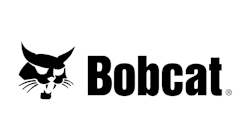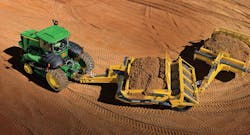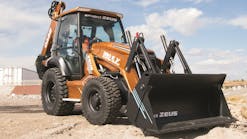Someone has claimed that “the robot” is the greatest novelty dance of all time. I won’t argue it if you won’t argue that our nation’s crumbling infrastructure is the biggest challenge facing the United States in modern time. Our discussion leading up to Infrastructure Week (May 16–23) continues this week first with a video that shows how a trend can become a very large part of popular culture.
Consider how “the robot” became the greatest novelty dance of all time:
This week we hear from Dan Donovan who is the director of road demolition sales for Volvo Construction Equipment North America:
Grading & Excavation Contractor (GX): Which infrastructure projects should be given priority? Roads and bridges? Dams and levees? Water supply? Electrical grid?
Dan Donovan (DD): From my view, as far as infrastructure projects, I think our bridges and roads need to be repaired. About 65% of roads in the US are in “less-than-good” condition, according to the American Society of Civil Engineers’ 2013 Report Card for America’s Infrastructure. With the passage of the highway bill, it means Congress and the government are looking to improve that, and the Fast Track bill will pump a lot of money into it, including a special freight corridor to help create a better intermodal highway.
GX: Is there a solution to long-term infrastructure funding?
DD: No, we don’t have a long-term solution to infrastructure funding. Congress signed the law funding infrastructure for three out of the five years. Part of the problem is no one wants to pass gas tax, or have user-fee road system toll roads. Both are two very unpopular items with voters. But the solutions are indexing the gas tax to inflation, or combining a gas tax raise with other revenue raising possibilities that are permanent and indexed to inflation. Any combination of these solutions or others will fix the trust fund permanently and benefit the economy immensely because of increased infrastructure development and long-term stability for businesses.
GX: What kind of harm is the current state of our infrastructure doing to the economy and the community?
DD: US vehicle miles traveled surged 4% in November 2015, compared with November 2014—the largest increase since 1999, based on data from the Transportation Department. This puts 2015 on pace to be the year with the most highway miles driven. The same is true in Europe, where car ownership or miles driven by motorist are also increasing every year. But despite the surge of motorist using roads, new highway and new roads to support that growth is just not coming.
Old roads are very expensive as far as environment, gas and time is concerned. Bad roads cause longer commutes, idling of vehicles, and is also damaging to vehicles and the environment. The current underfunded and damaged infrastructure produces the following issues:
- More wear and tear on vehicles
- More traffic congestions
- More time sitting in traffic
- Increased consumption of fuel
- Higher gas prices due to demand
- More damage to the environment
- Decreased public safety
- Less mobility and efficiency for goods delivery
- Higher transportation and goods costs
GX: What can various government entities—from local to Federal—do to attract private sector support and investment?
DD: There are a number of projects that the government has tried. One is around the beltway in Washington. It’s privately designed, built, and owned, where a contractor comes in to build, maintain, own, and then collect revenue for a certain number of years. I don’t know if they are getting lot of tractions or not. It’s a toll road, which is not as popular. But with automated toll taking, it’s easier to collect tolls.
A couple of states are also testing charging drivers based on the number of miles driven. But I think we’d see more toll roads before that type of activity takes off. It’s important for the government to work across party lines and pass politically difficult bills like a gas tax raise. The more stable the government, the easier it is to attract private investment.
Volvo is committed to the US and the road business. We support various industry associations in America. Our trucks are running on highways, and we rely on highways to deliver products, parts, and services to our customers. We also produce equipment that build better roads out of our Shippensburg facility, so our commitment to the highway and road industry is substantial.
Next week our four infrastructure questions are answered by an executive from John Deere Construction and Forestry.
These issues go well beyond grading and excavation. All of Forester’s publications, Stormwater, Erosion Control, Business Energy, Water Efficiency, and MSW Management have asked the same four questions of their various industry executives and experts. All of the discussions will be revealed here on the Forester Network leading up to Infrastructure Week.
Feel free to be part of the discussion by adding your comment below.









